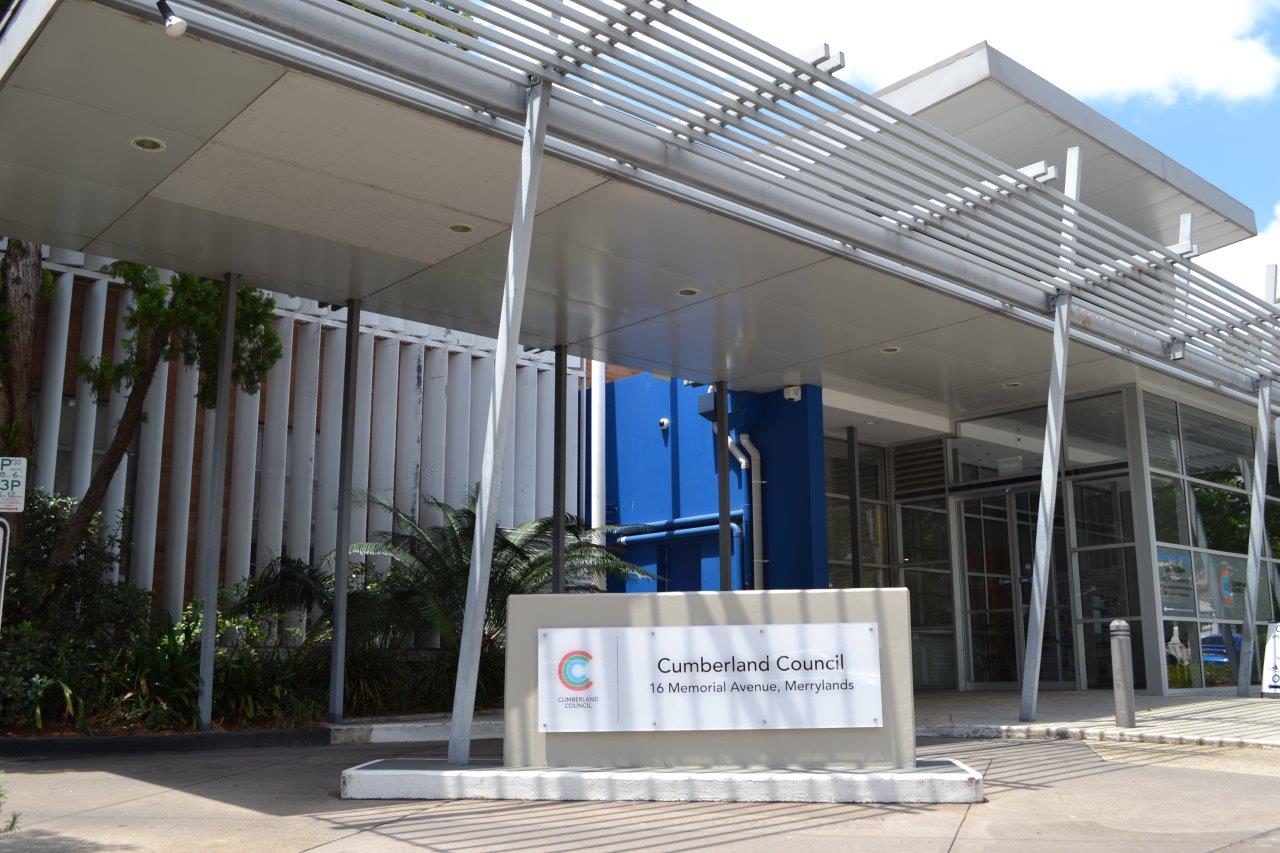Under the NSW Government's Flood Prone Land Policy, Council is required to manage flooding issues and put plans into place to safeguard flood-prone areas.
Council’s commitment to sound floodplain management is evident in our adherence to the guidelines outlined in the NSW Government's 2023 Flood Risk Management Manual. This manual serves as a valuable resource, guiding the council in developing and executing local Floodplain Risk Management Plans, ultimately leading to robust and effective floodplain risk management outcomes.
Flooding in Cumberland City Council
Council primarily manages stormwater through its system of pits and pipes. However, there are instances where the capacity of this drainage system is surpassed, leading to flooding. Flooding can be classified into various types:
- Overland flooding: Intense rainfall can create excess runoff which flows overland once the capacity of the drainage system is exceeded.
- Mainstream flooding: Intense rainfall can overflow the natural banks a creek, lake or river and flood areas adjacent to the waterways.
- Major flooding can be caused when mainstream flooding, overland flooding and tidal/oceanic inundation events coincide.
Managing flooding
Council develops and implements Flood Study and Floodplain Risk Management Plans which provide a range of measures to manage and reduce the impact of flooding. This work is guided by the Flood Risk Management Manual (2023).
Flood Information for your property
Before requesting Flood Information, you should contact our Engineering Services (Stormwater) Unit on 8757 9000 to confirm flood information is available for your property. (Fees apply).
Developing in floodplains
Development and construction work in floodplains is controlled to minimise both the impact of flooding on your property as well as the impact on neighbouring properties.
Different controls apply depending on what kind of development it is, the nature of flooding and the development approval pathway.
For complying development (CDC), the proposed development must satisfy requirements given in the State Environmental Planning Policy (Exempt and Complying Development Codes) 2008.
For the purposes of the Codes, all flood-affected properties in the Cumberland City Council are deemed to be a flood control lot.
Flooding FAQs
When does flooding occur?
Flooding is unpredictable. Flooding occurs when water covers land that is normally dry. There may be many years between floods or multiple events can occur in a single year.
What causes flooding?
The main cause of flooding is heavy rainfall, although high tides can have minor impacts in some areas.
There are two types of flooding from heavy rain namely mainstream and overland flooding occurs during and following heavy rainfall in a catchment.
Overland flooding
Overland flow is where water floods land as it makes its way to the river or creek and can sometimes be caused by blockages or lack of capacity in street drainage.
Riverine flooding
Riverine flooding is when rivers and creeks become full and overflow onto the land. In most floods, both types of flooding occur.
What is a flood risk?
Flood risk is a combination of the likelihood and impact of a flood. Flood risk maps show whether flood-prone properties have a high, medium, or low risk.
Generally, the lower the land and/or the closer to a creek, river, overland flow path or coast, the greater the flood risk.
What determines the size of a flood?
The size of a flood depends on several factors. These include the intensity and duration of rainfall, the area, surface shape and fall of the affected catchment, and the area of hard surfaces - such as roads and roofs - within the catchment.
For example, a large flat area at the bottom of a catchment is more likely to have a larger flood area. Large floods are less frequent than small floods.
Whose role is to manage flood risk?
Everyone has a role to play in managing the risks of flooding – individuals, as well as federal, state, and local government.
Individual residents and businesses have a responsibility to know their flood risk, to plan for flooding and to act in a way that protects themselves and their property.
NSW State Emergency Service (SES) are the flood combat agency coordinating emergency response when floods happen.
Local and state government bodies create flood policy, provide funding, build defences and set land use planning regulations. These measures try to reduce the frequency of flooding and reduce the impact of floods when they occur.
Why doesn’t Council’s stormwater drainage prevent overland flooding?
Council’s stormwater drainage network comprises stormwater pits, pipes and open channels. Like all drainage networks, it is primarily designed to manage minor, more frequent rainfall.
In major storm events, excess runoff may flow overland, and roads and valleys then usually act as the primary flow paths. Thus, Council’s stormwater drainage can’t prevent overland flooding during major storm event.
Can flooding be prevented at all?
Flooding is a natural part of how rivers work and will always be a possibility when large amounts of rain fall in a catchment. Therefore, flooding cannot be completely prevented.
However, infrastructure can be designed to reduce the impacts and risks of flooding by slowing the water down, stopping it reaching certain areas, or by building in a way that we make space for water.
How are flood affected properties identified?
Councils’ flood modelling determines the extent of flooding throughout the catchment and the identification of properties impacted by flooding. When Council is in possession of reliable information regarding flooding, it is obliged to provide that information when asked. This consultation is one way for Council to advise affected property owners and residents of flood affected properties. Council is also required to notate S10.7 Planning Certificates for properties that are identified as flood prone.
What does being flood affected mean for my property?
Being flood affected means this property has a risk of being flood affected in specific rainfall event. This may result in flood-related development controls being applied to the development consent, for example raising floor levels or using flood resistant materials. This also includes signing up for flood warnings, preparing a flood plan and a flood kit.
What do I do if my property is in a flood risk area?
The State Emergency Service provides advice on how to manage flood risk, on their website. The information in the SES’s website gives you all the information you need to prepare for flooding.
Everyone’s situation is slightly different so a big part of being prepared is taking time to think about what the safest thing for you to do if a flood happens.
What should I do in the event of a flood?
You should act on the conditions of the flooding and if the situation is life threatening, then you should call 000.
For other assistance during an emergency such as flood, storm or tsunami, please contact the NSW State Emergency Service (SES) on 132500 or visit their website at www.ses.nsw.gov.au.
It is best to be prepared for any flood. The State Emergency Service also provides advice on how to manage your flood risk, on their website.
What is a 1% AEP or 1 in 100 year flood?
A 1% annual exceedance probability (AEP) flood represents a 1% chance of occurring in any year. This is a large but rare flood. It was previously known as the 100-year recurrence flood. The 1% AEP flood defines a medium flood.
What is a probable maximum flood (PMF)?
A probable maximum flood (PMF) is the largest possible flood. While extremely rare, a few floods in Australia have approached the magnitude of a PMF.
The PMF defines the maximum extent of a floodplain. Areas that flood in a PMF, but do not flood in the 1% AEP flood are generally considered low risk. Some situations, such as underground carparks, are always high-risk in any flooding event.
What is a flood study?
A flood study is the first stage in the floodplain risk management process. It involves a technical investigation of flood behaviour in a defined catchment.
Flood studies reveal the extent, levels and velocity of floodwaters across the floodplain for different flood events.
Why does council study flooding?
Under the NSW Government’s Flood-Prone Land policy, local councils have the primary responsibility for managing flood risk.
This risk management process includes studying floods, identifying, and implementing measures to reduce the risk.
Flooding can cause significant damage to property and risk to life. All Councils are required by the NSW State Government to undertake studies to determine what land has the potential to be affected by flooding. This is to ensure that new developments are adequately protected and do not make flooding worse.
What is the difference between a Flood Study and a Floodplain Risk Management Study?
Flood Studies identify flood behaviour including the areas flooded, water depth, hazard categories and the likelihood of flooding within the catchment.
Floodplain Risk Management Studies and Plans assess potential management approaches to reduce the impact of flooding (e.g., drainage upgrades, development controls, community awareness and emergency response arrangements).
Is Climate Change Considered in the flood study?
Often, flood studies consider the potential future changes to rainfall intensity on flood levels, as recognised by the State Government. To date, Council has not considered climate change impacts when determining flood levels. No decision has been made at this stage as to how to recognise this future risk, and will be considered further in future investigations
How do I find out if my property is subject to flooding?
Visit Cumberland City Council website
For more information about high, medium and low flood risk, see Cumberland City Council’s Development Control Plan
Additional information can be found on the following websites:
Will flood information affect property values or insurance premiums?
Council cannot advise on this. Property values are based on a range of factors, of which potential flooding is only one.
What if I want to develop my property?
Flood Risk Management Policy 2021 of Cumberland City Council lists controls to minimise the impact of flooding on proposed developments, as well as the impact of the proposed development on flooding.
These controls relate to floor levels, building components, structural soundness, flood effects, car parking, evacuation, and management and design.
Different controls may apply depending on the nature of the proposed development and the nature of flooding.
What is a flood planning area?
The flood planning area is the area within which developments may be subject to flood related development controls. The flood planning area is calculated as the area lower than the Flood Planning Level.
What is a freeboard?
Freeboard is a height above the 1% AEP flood level that is included in the Flood Planning Level to account for factors such as wind, waves, unforeseen blockages, other localised hydraulic effects. Freeboard is usually 0.5m above a 1% AEP flood level.
My property has never been flooded - why is it considered flood affected?
Floods do not occur in a regular pattern. There may be a period of no floods and a period of several floods. For example, the last time the Brisbane River flooded before the 2011 disaster was in 1974. Residents who moved there in more recent times may never considered flooding an issue until the floods in January 2011. Following extensive rain every water course will flood but time is unknown.
I still don't think my property is flood affected? What can I do?
Members of the public can make a written submission to Council to raise flood related issues. You can provide your valuable feedback and comments by calling or emailing Council at council@cumberland.nsw.gov.au
Will I have to undertake a flood study when I want to develop my land?
It depends on the type and scale of the development. New developments which affect the flood behaviour and has potential to negatively impact the flood affectation to the neighbouring properties will require flood study & flood impact assessment with development application lodgement.
What are Councils doing to manage flood risk?
Council prepare Flood Studies and Risk Management Plans according to the NSW Government's 2023 Flood Risk Management Manual. The recommendations are implemented with the technical and financial assistance of NSW Government and key stakeholders through the Flood Prone Land Policy.
Why can't council fix all flooding?
Council’s piped stormwater system is designed to convey frequent minor storms with the aim of reducing day-to-day nuisance flooding, while major storms are conveyed via overland flow paths with the aim of protecting life and property in major events. It is impractical to provide piped drainage systems for major storm events as this is cost prohibitive.
What if I want to sell my property?
Prospective buyers will request a Section 10.7 certificate from Council.
This will inform them of Council policies (including those related to flooding) that apply to the property, including any that restrict the use or development of the land, or which places obligations on the owner.
How do I get my flood information about my property?
Detailed information regarding flood-affected properties is available for purchase from Council. Before requesting this information, you should contact council’s Stormwater and Flood management Unit on 8757 9000 to confirm it is available for your property (Fees apply).





